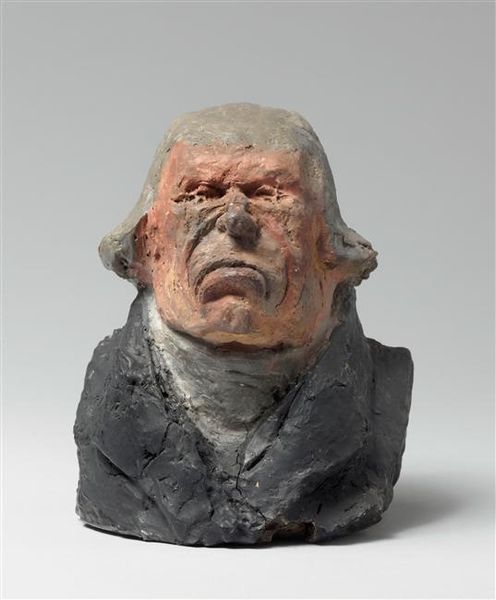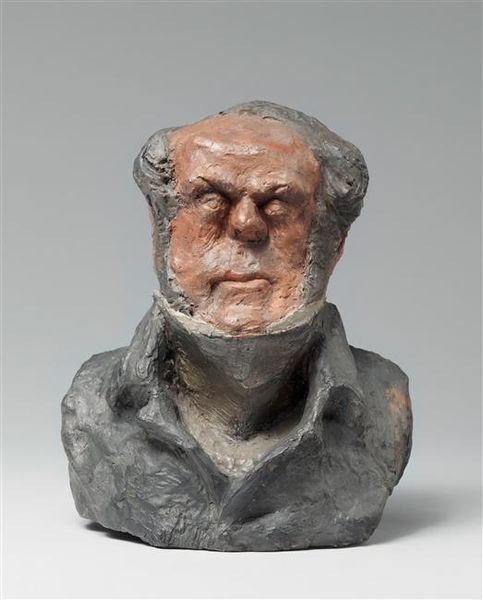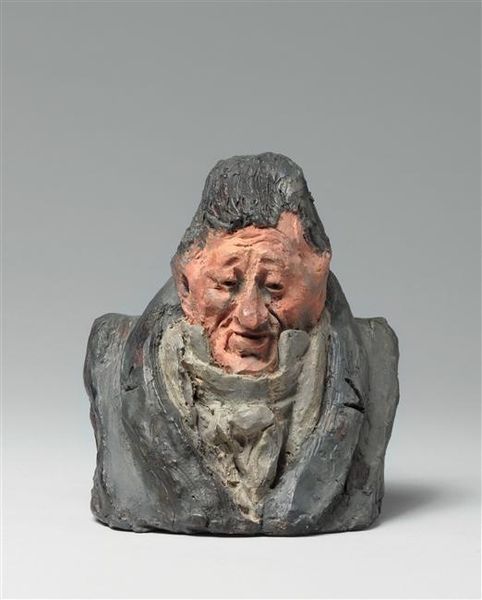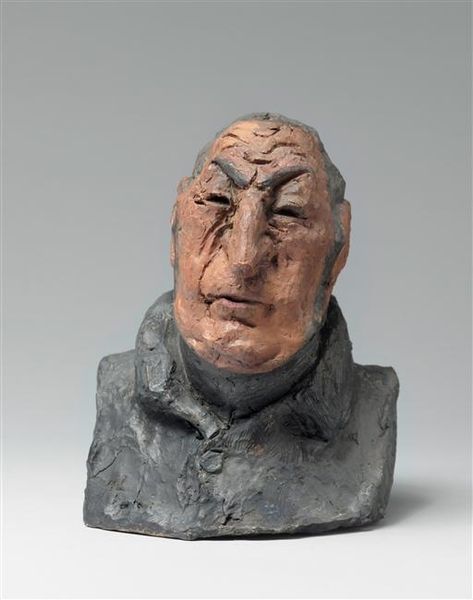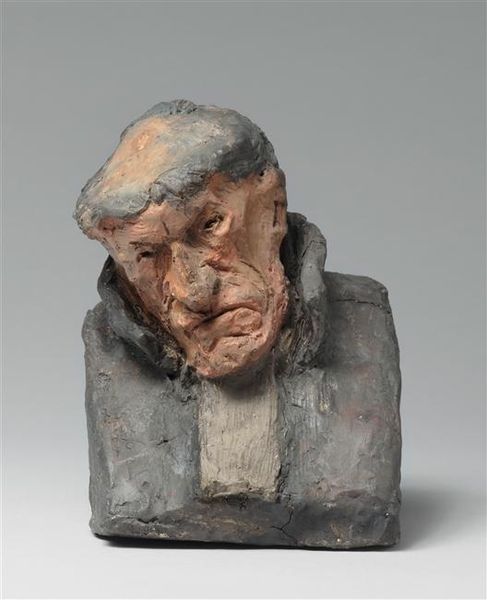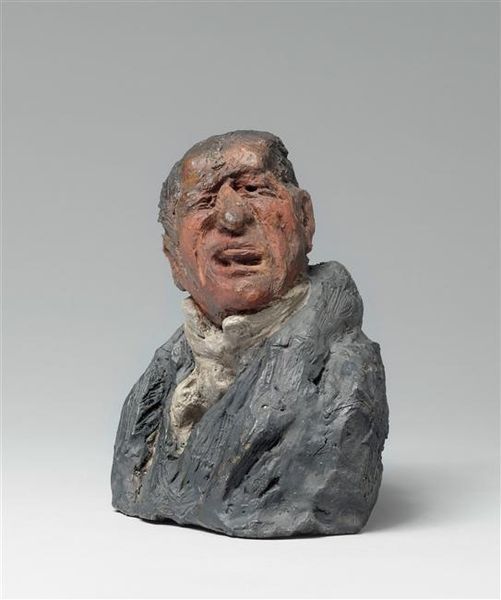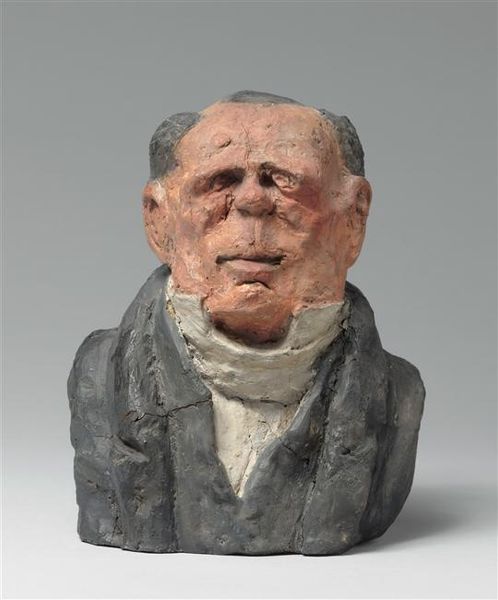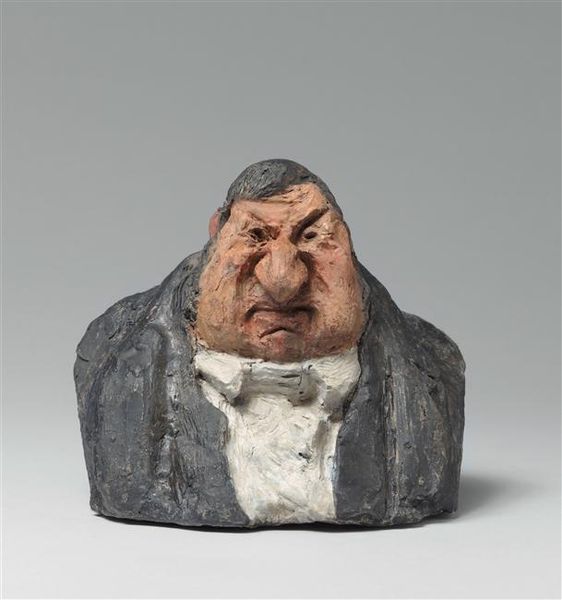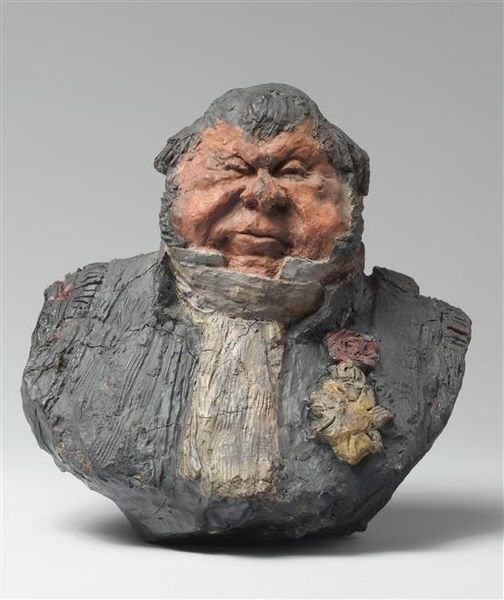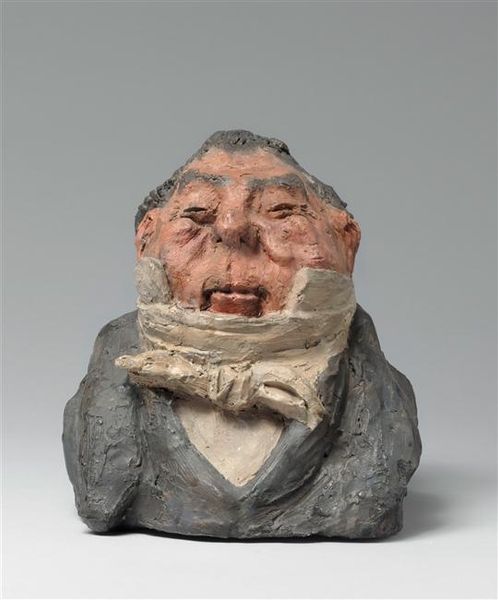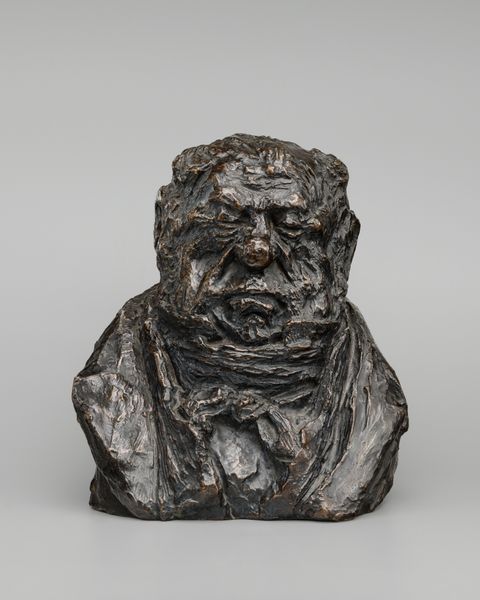
carving, sculpture, plaster
#
portrait
#
16_19th-century
#
carving
#
sculpture
#
sculpture
#
romanticism
#
plaster
#
realism
Copyright: Public domain
Editor: We're looking at Honoré Daumier's striking plaster sculpture, "Claude Baillot, MP," created in 1832. The sitter seems so imposing, and perhaps a little bit... disagreeable. How do you interpret this work? Curator: It's crucial to consider the political climate in France at this time. Daumier was known for his caricatures of the bourgeoisie, often critiquing their power and corruption through art. This wasn’t just portraiture; it was political commentary. Editor: So you’re saying the "disagreeable" aspect is intentional? Curator: Precisely! It's not just about capturing Baillot's likeness; it's about Daumier's perspective on figures like him. What impact do you think works like this had on the public’s view of politicians? Editor: I suppose it would have added to the growing dissatisfaction with the political elite, by portraying them in a less than flattering light, in quite a subversive way. The roughness of the plaster emphasizes a raw, almost grotesque quality. Curator: Exactly. This raw quality contrasted sharply with the polished, idealized portraits usually commissioned. The unidealized treatment highlights not only the physical features, but also questions the character and political integrity of Baillot and those he represents. Editor: This helps me appreciate Daumier's role in shaping public discourse through art, challenging established power structures in France. Thank you! Curator: And considering how such powerful social critique was disseminated to the wider public really opens your eyes to the power of art.
Comments
No comments
Be the first to comment and join the conversation on the ultimate creative platform.

